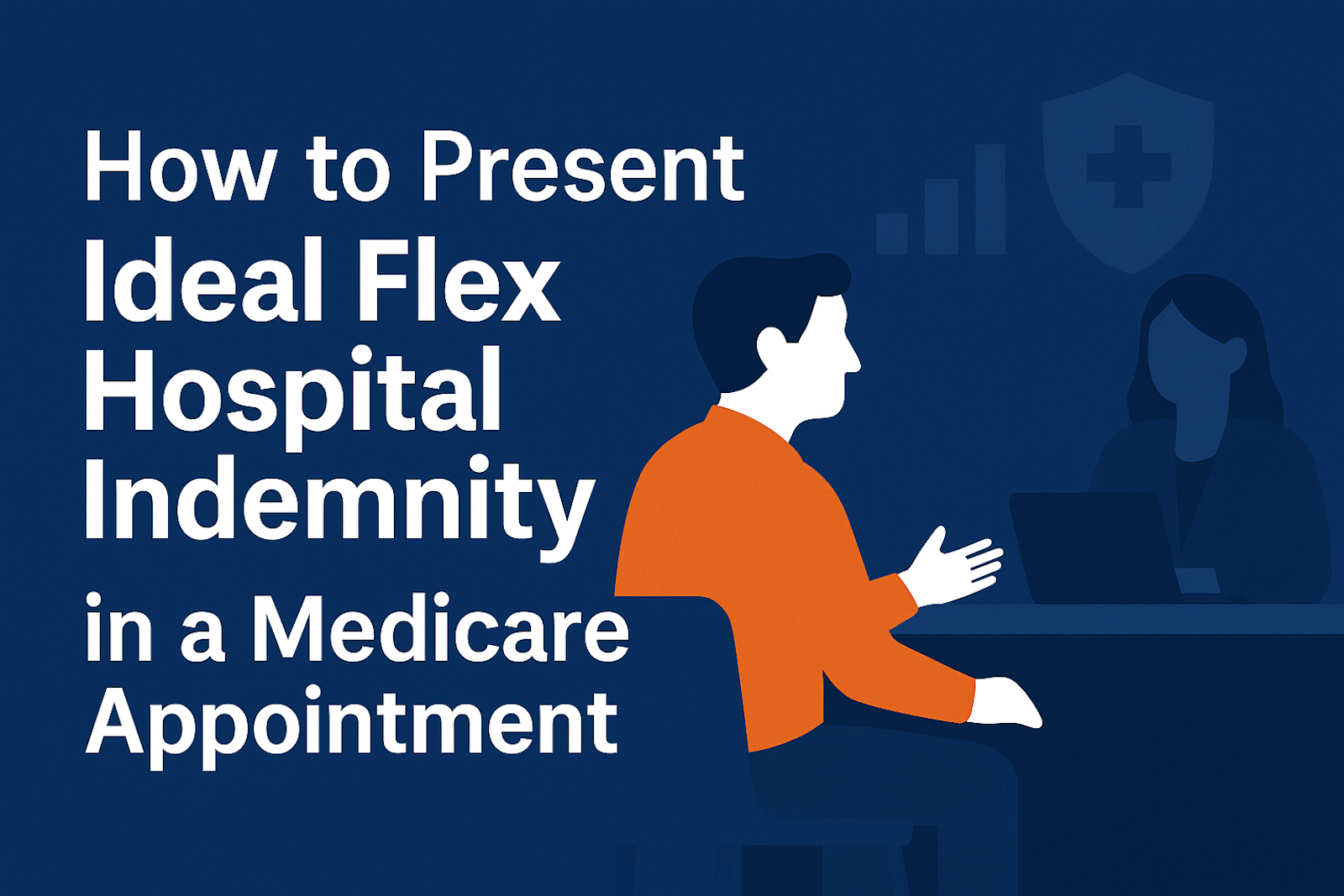

When you're sitting across the table from a client going over Medicare options, there’s a moment every seasoned agent knows well—the pause. It happens when you mention that a plan has copays or that a hospital stay might cost thousands out of pocket. They nod slowly. They're trying to process it. That moment is exactly where Hospital Indemnity belongs.
But how you position it—and what product you choose—makes all the difference.
At Brokers Fidelity, we helped design, develop, and launch the Ideal Flex Series Hospital Indemnity plan from American Home Life Insurance Company specifically to meet the needs of agents working in the Medicare space. This article will show you exactly how to present Ideal Flex in a Medicare appointment, overcome common objections, and help your clients walk away better protected—and more confident.
Don’t start with Hospital Indemnity as a “policy” or “rider.” Start with the gap.
Say something like:
“This Medicare Advantage plan looks great overall—it’s zero premium, strong network, good RX coverage. But let me point out one area where we’ve seen people get surprised.”
Then walk them through:
The inpatient hospital copay (often $300–$400 per day)
The cost of a 5-day stay
Observation status and how it’s not always fully covered
Ambulance or ER copays
Keep it simple and real. Most clients aren’t worried about the monthly premium—they’re worried about getting hit with a $2,000 bill they weren’t expecting.
Once they understand the risk, make the transition:
“Now there’s a plan designed to help cover exactly those gaps—it’s called a Hospital Indemnity plan. The one I recommend is called Ideal Flex, and it was built specifically for people on Medicare.”
Then pause. Let them respond. Most clients will lean in at this point, and you’re now talking solutions, not just coverage.
If they ask, “Why this one?”—you’ve got real answers:
Built for Medicare plans. Ideal Flex was designed around the real gaps in Medicare Advantage and high-deductible Supplement plans.
Daily benefit flexibility. Choose a daily benefit that matches their inpatient copay.
Built-in extras. Emergency room, mental health, pet boarding, observation—no riders required.
Issue age up to 84. Most clients qualify—even those who waited too long.
Easy eApp with voice or text signature. You can quote and enroll in minutes.
Here's how to explain Ideal Flex in plain English:
“If you’re admitted to the hospital, this plan pays you a lump sum—direct to you—based on how many days you stay. Most people choose a benefit that lines up with their Medicare copay, so you’re not stuck with a big bill. And it even pays if you’re held overnight for observation.”
Another version:
“Think of it like a backup plan for your backup plan. If Medicare Advantage covers most of it, this covers the rest.”
This is one of the most common pushbacks—and one of the easiest to overcome.
Try this:
“That’s exactly why it’s smart to get it now. Rates are lower, and you can lock it in while you’re still healthy. Insurance isn’t about what you expect—it’s about what could happen. One night in the hospital could cost $1,500. Ideal Flex would pay that back to you—tax free.”
Or:
“You’ve got car insurance, right? Not because you’re planning to crash—because you know what it would cost if you did.”
If price is the concern, bring it back to value:
“Totally understand. Let’s look at what you’re exposed to right now. One hospital stay could run $2,000–$3,000. This plan starts at just a dollar a day—and it could save you thousands.”
You can also down-sell with flexibility:
“We can adjust the daily benefit to make it fit your budget. You don’t need the max to get solid protection.”
The best time to introduce Hospital Indemnity is right after you walk through their Medicare Advantage or Med Supp plan details—especially when outlining copays and coinsurance.
Look for these cues:
“Wow, I didn’t know that wasn’t covered…”
“That’s a lot if I end up in the hospital…”
“My neighbor got stuck with a huge bill…”
Those moments are signals to pivot. Don’t bury Ideal Flex in a product list—tie it directly to the pain point.
Here’s a quick outline of how you can build Ideal Flex into every Medicare Advantage appointment:
Review the core plan: Walk through copays, max out-of-pocket, and key gaps.
Introduce risk: Share a real-life example of someone who had a hospital stay or ER visit.
Present the solution: Explain how Ideal Flex works and why you trust it.
Give a quote: Keep it simple—“Here’s what $300/day looks like. This would cover most inpatient stays.”
Close with confidence: Emphasize how it protects their retirement and avoids surprise bills.
Because Brokers Fidelity helped build this product, our agents get more than just access:
Priority support
Custom training
Co-branded materials
Top-tier 72.5% street-level commissions
A fast eApp and voice/text signature options
This isn’t just another Hospital Indemnity plan. It’s a tool you can lead with—and a product you can stand behind.
Every Medicare client has gaps. Every agent has a choice in how they address them.
With the Ideal Flex Series Hospital Indemnity plan from American Home Life Insurance Company, you’re offering more than a product—you’re offering peace of mind, real protection, and a better way to serve.
Don’t wait until your client asks. Be the kind of agent who leads with value, anticipates needs, and closes with confidence.
For full product specs, appointment materials, and marketing tools, call Brokers Fidelity or visit:
www.brokersfidelity.com
Brokers Fidelity
Phone: 913-374-1550
Email: hello@brokersfidelity.com
Address: 400 S Kansas Ave, Topeka, KS 66603